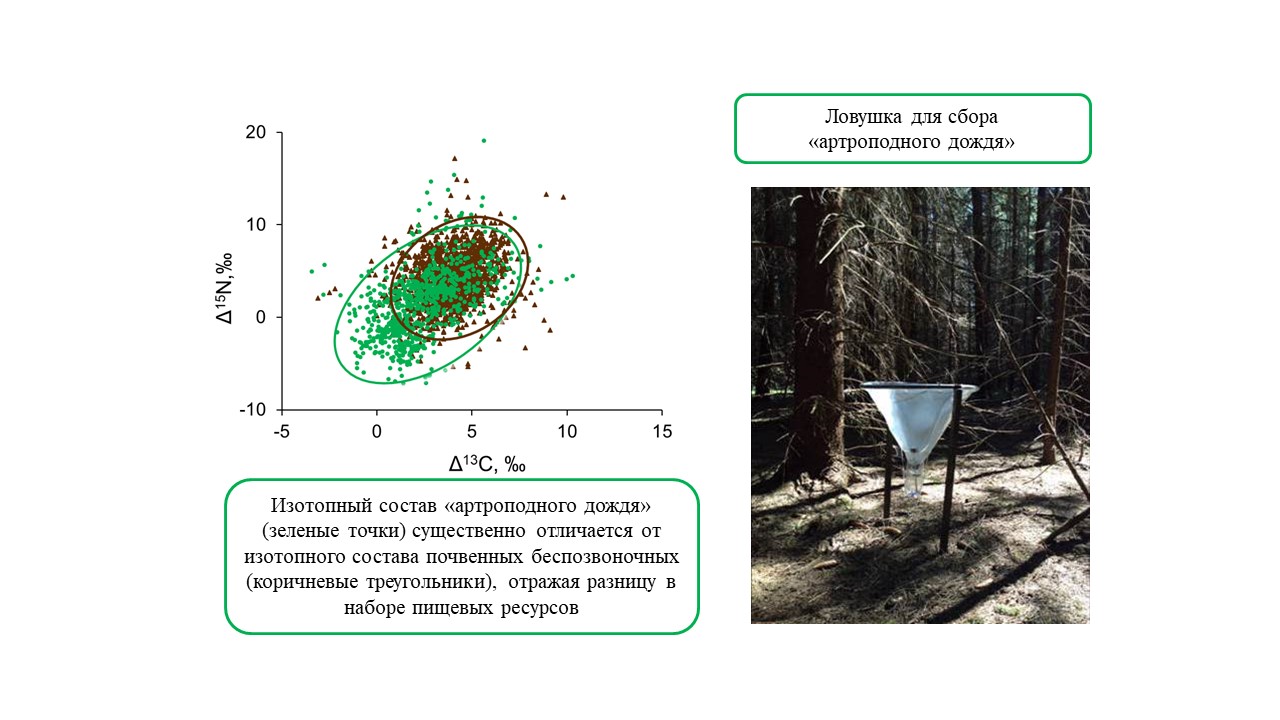
Scientists of the A.N. Severtsov Institute of Ecology and Evolution RAS (IEE RAS) and Moscow State University for the first time evaluated the role of arthropods falling from trees to the soil surface, finding out that they account for up to 7% of the flow of organic matter from the forest canopy. The data obtained will make it possible to better predict the stability of terrestrial ecosystems, the press service of the Ministry of Education and Science writes. The results of the study were published by the scientific journal Scientific Reports.
A significant part of the invertebrates living in the tree crowns, due to various reasons, falls on the soil surface. This phenomenon is called "arthropod rain". Fallen invertebrates are consumed by organisms living on the soil surface. Thus, the detrital, that is, located in the soil, the food web receives an additional source of energy.
"According to the estimates obtained, in the forests of the temperate zone, up to 7% of the flow of organic matter from the forest canopy is "arthropod rain". And, apparently, this amount is enough to feed, for example, such a large group as spiders.<...> Thus, "arthropod rain" makes a significant contribution to maintaining the functional unity of soil food webs and maintains the diversity of soil inhabitants in forest ecosystems.
As the authors of the work note, although the structure of soil communities has been studied for a long time, however, the contribution of invertebrates falling from crowns and the functional significance of this resource has not yet been estimated. In the new work, the researchers conducted an experiment in different types of forests at the biological station "Malinki" IEE RAS in the Moscow region.
As a result, it was possible to estimate the magnitude of the flow and the functional significance of arthropods falling from the forest canopy onto the soil surface. And also find out that "arthropod rain" consists of two components: wingless arthropods and winged insects. Wingless (mites, hay-eaters, caterpillars, aphids, etc.) account for up to 30% of "arthropod rain" and are easily accessible to soil predators. Most winged insects are closely associated with soil food webs. They actively move within the forest canopy, thereby contributing to the horizontal movement of the resource.
"We hope that the results of this study will help to assess the importance of the tree crown fauna, including its diversity, for the sustainable functioning of terrestrial ecosystems. In the future, this will allow us to build a model of trophic interaction between these tiers in forest ecosystems of different climatic zones," said Oksana Rozanova, one of the authors of the study, junior researcher at IEE RAS.
This work was supported by RFBR project 18-34-00181.
Rozanova, O.L., Tsurikov, S.M., Krivosheina, M.G., Tanasevitch A.V., Fedorenko D.N., Leonov V.D., Timokhov A.V., Tiunov A.V., Semenina E.E.
The isotopic signature of the “arthropod rain” in a temperate forest. Scientific Reports 12, 321 (2022).
https://doi.org/10.1038/s41598-021-03893-6
Rozanova O.L., Tsurikov S.M., Tiunov A.V., Semenina E.E. Arthropod rain in a temperate forest: Intensity and composition. Pedobiologia 75, 52-56 (2019)
https://doi.org/10.1016/j.pedobi.2019.05.005
On the picture:
The isotopic composition of the "arthropod rain" (green dots) differs significantly from the isotopic composition of soil invertebrates (brown triangles), reflecting the difference in the set of food resources.
Related materials:
Ministry of Science and Higher Education of the Russian Federation: "Scientists have described for the first time the role of "rain" from arthropods in maintaining the ecological balance in forests"
Scientific Russia: "Scientists have for the first time described the role of "rain" from arthropods in maintaining the ecological balance in forests"
